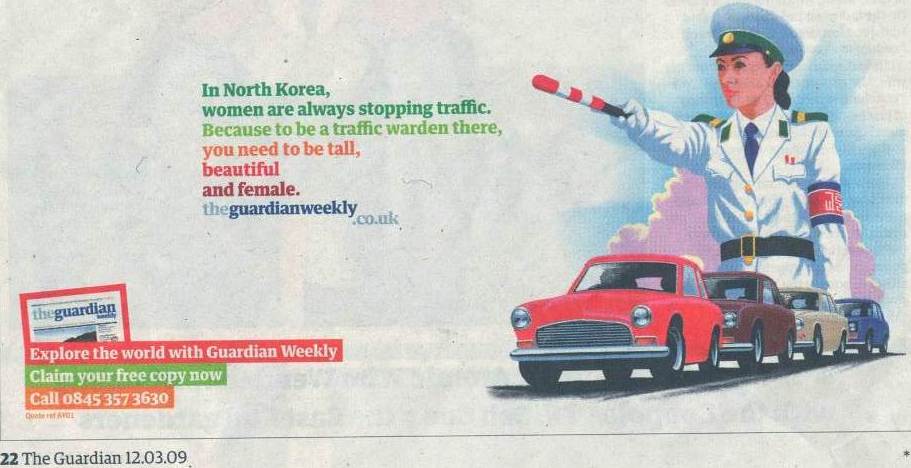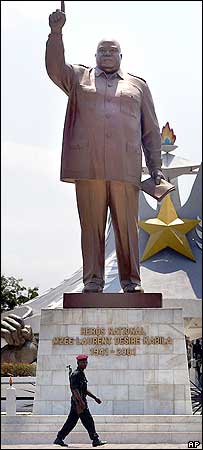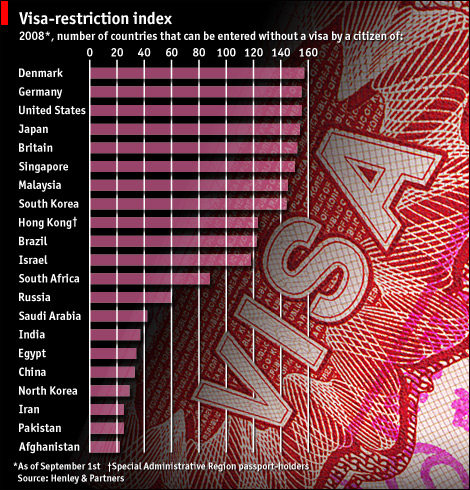UPDATE: In response to the resolution, the DPRK has made some serious threats. According to the Telegraph:
A commentary in the North’s state-run Rodong Sinmun newspaper claimed the US had 1,000 nuclear weapons in South Korea ready to strike.
Meanwhile, the Tongbil Sinbo newspaper said that North Korea is “completely within the range of US nuclear attack and the Korean peninsula is becoming an area where the chances of nuclear war are the highest in the world.”
Over the weekend, North Korea angrily responded to fresh United Nations sanctions by threatening to build as many nuclear weapons as possible.
Until now, it said, it had only reprocessed one-third of its spent fuel rods into weapons-grade plutonium. Analysts believe the rogue state could end up with enough plutonium to make eight to nine bombs.
The rogue state also claimed to have a uranium-enrichment programme, the first time it has admitted to one. The claim is alarming, said Professor Yang Moo-Jin, of Seoul’s University of North Korean Studies.
“The North has abundant natural uranium of good quality, which, if combined with technology and facilities, would result in a great nuclear arsenal,” he said.
UPDATE: The United Naitons Security Council (UNSC) has passed a new resolution in response to the DPRK’s second nuclear test. Althought the text of the resolution has been posted to the UNSC web page (here), below are the economically significant excerpts (taken from Reuters). The resolution…
1. Calls upon all States to inspect, in accordance with their national authorities and legislation, and consistent with international law, all cargo to and from the DPRK, in their territory, including seaports and airports, if the State concerned has information that provides reasonable grounds to believe the cargo contains items the supply, sale, transfer, or export of which is prohibited;
2. Calls upon all Member States to inspect vessels, with the consent of the flag State, on the high seas, if they have information that provides reasonable grounds to believe that the cargo of such vessels contains items the supply, sale, transfer, or export of which is prohibited;
3. Calls upon all States to cooperate with inspections pursuant to paragraphs 11 and 12, and, if the flag State does not consent to inspection on the high seas, decides that the flag State shall direct the vessel to proceed to an appropriate and convenient port for the required inspection by the local authorities pursuant to paragraph 11;
4. Decides that Member States shall prohibit the provision by their nationals or from their territory of bunkering services, such as provision of fuel or supplies, or other servicing of vessels, to DPRK vessels if they have information that provides reasonable grounds to believe they are carrying items the supply, sale, transfer, or export of which is prohibited … unless provision of such services is necessary for humanitarian purposes;
5. Calls upon Member States … to prevent the provision of financial services … that could contribute to the DPRK’s nuclear-related, ballistic missile-related, or other weapons of mass destruction-related programs or activities;
6. Calls upon all Member States and international financial and credit institutions not to enter into new commitments for grants, financial assistance, or concessional loans to the DPRK, except for humanitarian and developmental purposes;
7. Calls upon all Member States not to provide public financial support for trade with the DPRK … where such financial support could contribute to the DPRK’s nuclear-related or ballistic missile-related or other WMD-related programs or activities;
In the Washington Post, Marcus Noland asserts that this sanctions plan is “clever”. Instead of a “crime and punishment” approach to North Korea, he said, the proposed sanctions are “basically defensive,” relying on interdiction of ships and global financial restrictions. He also went on to say, “The North Koreans will be down to whatever China gives them and whatever they can get from their subterranean customers in the Middle East.”
The Washington Post also states:
But there is little chance that these tougher sanctions will limit the ability of Kim Jong Il’s government to profit from more conventional overseas trade, said Lim Eul-chul, a researcher who specializes in North Korean trade for the Seoul-based Institute for Far Eastern Studies.
“The sanctions will not have much effect on what North Korea trades with China,” he said.
North Korea consistently fails to grow enough food to feed its 23 million people, and its state-controlled economy is moribund, but it does have mineral resources that are coveted by many industrialized countries.
The estimated value of its reserves — including coal, iron ore, zinc, uranium and the world’s largest known deposit of magnesite, which is essential for making lightweight metal for airplanes and electronics — is more than $2 trillion, according to the Korea Chamber of Commerce and Industry.
The manufacturing boom in neighboring China has dovetailed with North Korea’s acute need for hard currency and has accelerated Chinese access to the North’s resources, according to Lim, Chinese mining experts and South Korean government officials. There is, however, a significant new wrinkle in the North’s trade with China, Lim said. “The military is taking control of export sales,” he said, citing informants inside North Korea.
Other branches of the North Korean government, such as the Workers’ Party and the cabinet, have been forced to relinquish their interest in these sales to the military, Lim said. The military has grabbed greater control of export revenue, he said, as it has provoked the outside world with missile launches and the nuclear test.
Based on the recent growth of North Korean-Chinese trade, Lim said he does not believe that China wants to “take any strong measures to crush the North Korean economy.”
An article in the New York Times expresses sckepticism that these new sanctions will deter North Korea’s nuclear ambitions:
This time, in addition to financial sanctions, the proposed Security Council resolution calls for a tighter arms embargo, possible interdiction of North Korean vessels. But most analysts say that none of the threats are large enough to stop a regime that sees nuclear weapons as the key to its survival, and that has endured decades of economic sanctions and hardships, including even starvation, rather than capitulate to outside pressure.
“These are people who didn’t flinch even when 2 million of their own people died of hunger,” said Lee Ji-sue, a North Korea specialist at Myongji University.
And that is assuming that the sanctions are fully enforced. While many of these same measures have been included in previous U.N. resolutions, nations like China and Russia were reluctant to enforce them to avoid antagonizing the North.
Critics and proponents alike agree that the linchpin in making any sanctions work is China, North Korea’s primary aid and trade partner. China shares an 850-mile border with North Korea, and its $2 billion annual trade with the North accounts for over 40 percent of Pyongyang’s entire external trade, according to South Korean government estimates. North Korea’s trade with China expanded by 23 percent just last year, the South Korean government said.
Both United States and South Korean officials fear that although Beijing was disappointed by the North’s continued tests, it remains reluctant to push too hard. They say China fears causing a collapse by the Pyongyang regime that could flood it with refugees and create a newly unified, pro-American Korea on its border.
Finally, The Economist weighs in with some critical analysis:
It is hard to envision that the new sanctions will bring North Korea back to the negotiating table. With few exceptions, previous rounds of economic sanctions have had little impact. In the present case, unanimity was achieved at the price of watering down the provisions that require other countries to search North Korean vessels. The final compromise—that North Korean ships are required to undergo searches but cannot be forced to do so—is hardly a recipe for effective enforcement.
As in the past, China—and Russia, to a lesser extent—may have supported the new sanctions primarily to send North Korea a message of unified international condemnation. But North Korea will hardly infer from the passage of a murkily worded, patchily enforced resolution that it has exhausted its ability to wring concessions from its neighbours and exploit their differences. Moreover, even if the new measures are consistently enforced, it’s not clear that punishments designed to put economic and diplomatic pressure on North Korea will change the regime’s behaviour. North Korea is already one of the most isolated and desperately poor countries in the world.
Divergent interests
A lasting solution to the North Korea problem will require more than just agreeing a common approach and collectively enforcing sanctions. The main problem is not just North Korea’s unpredictability, which is, after all, predictable. It is that there are also major differences between the various interested powers in terms of how they assess the threat and what they view as the optimal outcome.Although China’s influence over North Korea is often overstated, China alone has the economic leverage to force the regime back to the bargaining table. China’s dilemma, however, is that there may be a fine line between the amount of pressure sufficient to force the stubborn regime to make concessions and the amount that would precipitate its collapse. The fall of the current regime would almost certainly result in a massive humanitarian crisis (more accurately, China would suddenly bear the brunt of the crisis already wracking its chronically famine-stricken neighbour). For China (and Russia) the collapse of North Korea would also be a big strategic setback. The bonds of communist solidarity may have faded since Mao Zedong sent hundreds of thousands of soldiers to fight US-led UN forces during the Korean war—but North Korea remains a buffer state, the loss of which could result in a united, US-allied Korean peninsula.
Read the full articles below:
Key excerpts from U.N. North Korea resolution
Reuters
Claudia Parsons
6/12/2009
Value of N. Korea Sanctions Disputed
Washington Post
Blaine Harden
6/12/2009
Will sanctions ever work on North Korea?
New York Times
Martin Fackler and Choe Sang-hun
6/12/2009
Punishing North Korea
The Economist
6/17/2009
ORIGINAL POST: The DPRK has historically faced few substantive repercussions from its missile and nuclear tests due to roles that Russia and China occupy both in the UN Security Council and in their status as North Korea’s neighbors, trading partners, and investors. Russia is developing the DPRK’s Rason Port and seeks to build a natural gas pipeline through the DPRK to South Korea. China is the DPRK’s largest trading partner. And of course, hundreds (maybe thousands?) of North Koreans work in both China and Russia to earn foreign currency for their government.
So how have China and Russia responded to the most recent nuclear test and missile launches? China has issued some tough language condeming the test and supposedly canceled some cultural exchanges, and Russian President Medviev has also expressed concern in the
Western business media:
We have always had good relations with the North Korean leadership. But what has happened raises great alarm and concern. I have had quite a number of telephone talks with the Prime Minister of Japan and the President of South Korea. We need to think about some measures to deter those programs that are being conducted. We hope the North Korean leadership will get back to the negotiating table, because there is no other solution to this problem. The world is so tiny—as we see from the economic problems common to all of us. But indeed, WMD development or [nuclear] proliferation is a danger that is even higher than that. I’m prepared to discuss this matter in more detail during our meeting with President Obama in Moscow in early July. And we’re going to discuss this in other forums also.
As the UN Security Council debates a resolution in response to the DPRK’s recent nuclear test and missile launches, China appears to be the DPRK’s strongest partner. According to the New York Times:
Negotiations over toughening sanctions against North Korea in the wake of its underground nuclear test last month have stalled over the issue of inspecting cargo ships on the high seas, according to two Security Council diplomats. China has yet to sign off on the idea that North Korean vessels could be stopped and searched, the diplomats said. Ambassadors from the five permanent members of the Security Council — the United States, Russia, China, Britain and France — plus Japan and South Korea, locked in intensive bargaining sessions all week, have agreed on other issues, including widening an arms embargo and financial restrictions, the diplomats said. North Korea has declared cargo inspections an act of war.
So it looks like Russia is “ok” with searching the DPRK’s cargo ships? That is surprising.
Aside from inspecting cargo ships, the US is pushing for the UNSC resolution to restrict the DPRK from the global financial system (a la Banco Delta Asia). According to the Washington Post:
State Department spokesman P.J. Crowley confirmed yesterday that the United States was considering targeting North Korea’s access to financial markets. A draft of the resolution urges U.N. member states to cut loans, financial assistance and grants to North Korea and its suppliers for programs linked to its military program. The draft also expands an asset freeze and travel ban.
The Bush administration applied similar financial pressure in 2005, infuriating Pyongyang. Crowley noted that, during a tour of Asian capitals this week, Deputy Secretary of State James B. Steinberg was accompanied by Treasury Undersecretary Stuart A. Levey, the architect of the Bush-era sanctions.
“Obviously, Stuart Levey’s presence on this team would indicate that we’re . . . looking at other ways that we can bilaterally put pressure on North Korea to return to the negotiating process,” Crowley said.
Additionally, the Obama administration has signaled that it might take the advice of John Bolton, former President Bush’s UN ambassador. According to the Washington Post:
The United States will consider reinstating North Korea to a list of state sponsors of terrorism, Secretary of State Hillary Rodham Clinton said in an interview broadcast yesterday as the Obama administration looks for ways to ratchet up pressure on Pyongyang after recent nuclear and missile tests.
“We’re going to look at it,” Clinton said on ABC’s “This Week” when asked about a letter last week from Republican senators demanding that North Korea be put back on the list. “There’s a process for it. Obviously we would want to see recent evidence of their support for international terrorism.”
Secretary of State Clinton’s comment “we would want to see more evidence of their support for international terrorism” refers to a legal requirement for any nation to be added to the list.
Here is the press release on the nuclear test by the US Director of National Intelligence.
Read more here:
Medvedev’s Strong Words for North Korea
Business Week
Maria Bartiromo
6/3/2009
Talks on North Korea Sanctions Stall Over Inspections
New York Times
Neil MacFarquhar
6/5/2009
U.S. Pushes U.N. Draft on N. Korea
Washington Post
Colum Lynch and Glenn Kessler
6/6/2009
U.S. to Weigh Returning North Korea to Terror List
Washington Post
Peter Finn
6/8/2009
U.S. Weighs Intercepting North Korean Shipments
New York Times
David E. Sanger
7/7/2009



